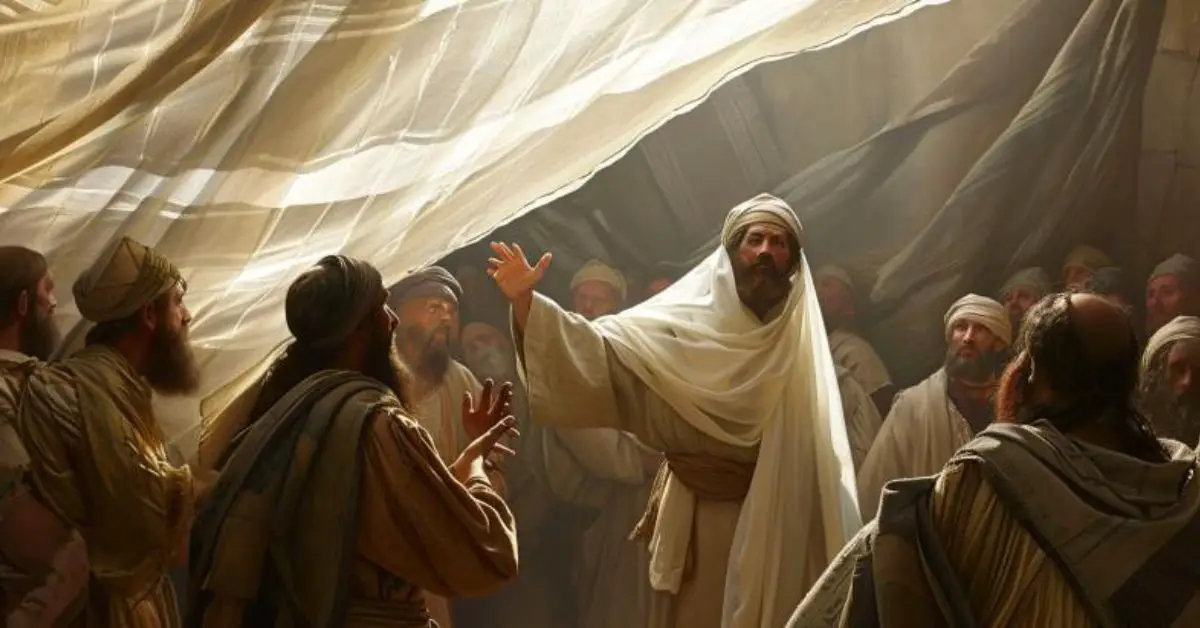In the Bible, the concept of a veil being lifted symbolizes gaining a deeper understanding or revelation, particularly about spiritual truths. This metaphor is used to describe moments of clarity and insight, where what was once hidden or obscured is now made clear. Most notably, in the New Testament, the veil being lifted refers to the access to God made possible through Jesus. It signifies the end of separation between humanity and God, allowing a direct relationship with Him. This idea of the veil being lifted represents a transition from a limited understanding to a fuller, clearer comprehension of God’s nature and purposes.
Uncover the biblical meaning of the veil being lifted. Dive into how this powerful metaphor represents spiritual enlightenment and the revelation of divine truths.
What Does the Bible Say About the Veil Being Lifted?
The metaphor of the veil being lifted in the Bible is rich with meaning, symbolizing revelation, understanding, and the removal of barriers between humanity and God. This imagery is particularly powerful in the context of the New Testament, where it signifies a new era of spiritual clarity and direct access to God.
In the Old Testament, the veil is often a physical and symbolic barrier. For example, in the Tabernacle, a veil separated the Holy Place from the Most Holy Place, where the presence of God dwelt. Only the high priest could enter, and only once a year. This veil symbolized the separation between God and His people due to sin and the limited access to God under the old covenant.
However, with the life, death, and resurrection of Jesus Christ, this all changes. The New Testament describes how, at the moment of Jesus’ death, the veil in the Temple was torn from top to bottom. This act symbolizes the end of the old covenant and the beginning of the new, where access to God is no longer limited to a select few. Through Jesus, the barrier of sin is removed, allowing a direct and personal relationship with God.
The concept of the veil being lifted is also used metaphorically to describe spiritual enlightenment. In the writings of Paul, particularly in 2 Corinthians, the lifting of the veil refers to understanding and accepting the gospel of Christ. It’s about the transformation that occurs when one turns to Christ; the veil of misunderstanding and spiritual blindness is removed, allowing one to see and understand spiritual truths clearly.
God’s view, as presented in these passages, is one of an invitation into a deeper, more intimate relationship with Him, facilitated by the removal of barriers through Christ. This lifted veil marks a shift from a religion based on laws and rituals to a faith centered on grace, relationship, and inner transformation.
The lifting of the veil is thus a powerful symbol of freedom, revelation, and new beginnings. It speaks of the profound change that occurs in one’s understanding and relationship with God when they embrace the message of Jesus Christ. It’s about seeing things in a new light, with a clarity and depth that was not possible before.
Bible Verses About the Veil Being Lifted
- Matthew 27:51 – This verse describes the moment of Jesus’ death, where the veil of the temple was torn in two, symbolizing the new access to God made available through Christ.
- 2 Corinthians 3:14-16 – Paul speaks about a veil that lies over the hearts of those who do not believe, which is removed in Christ. This passage symbolizes spiritual enlightenment and understanding that comes with faith in Jesus.
- Hebrews 10:19-20 – Here, believers are encouraged to enter the Most Holy Place confidently because of the new and living way opened by Jesus through the veil, that is, His flesh. It signifies direct access to God through Christ.
- Exodus 26:33 – Describing the Tabernacle, this verse mentions the veil that separates the Holy Place from the Most Holy Place, symbolizing the separation between God and humanity under the old covenant.
- Isaiah 25:7 – This prophecy speaks of the Lord destroying the shroud or veil that enfolds all peoples, a symbol of removing the barriers that obscure understanding.
- Mark 15:38 – Similar to Matthew 27:51, this verse recounts the tearing of the temple veil at Jesus’ death, underscoring the significance of this event in granting access to God.
- 2 Corinthians 4:3-4 – Paul describes the gospel being veiled to those who are perishing, a metaphor for spiritual blindness that is overcome through Christ.
- Luke 23:45 – This verse, recounting the darkness over the land and the tearing of the temple veil, highlights the dramatic change brought about by Jesus’ sacrifice.
- Hebrews 6:19-20 – This passage speaks of Jesus entering the inner sanctuary behind the veil as a forerunner on our behalf, further illustrating the access to God He provides.
- John 14:6 – While not mentioning a veil, this verse is relevant as Jesus declares He is the way, the truth, and the life, and no one comes to the Father except through Him, aligning with the theme of access to God through Christ.
The Bible’s imagery of the veil being lifted represents a profound transition from limited understanding and access to God to a new era of clarity, direct relationship, and spiritual enlightenment through Jesus Christ. This powerful metaphor illustrates the transformative impact of Christ’s sacrifice, removing the barriers of sin and misunderstanding. It invites believers into a deeper, more intimate understanding of God’s nature and purposes, symbolizing the freedom and revelation that come with faith in Jesus. The lifting of the veil marks a significant shift in the biblical narrative, from separation to communion, from obscurity to clarity, emphasizing the central role of Christ in bridging the gap between humanity and the divine.


